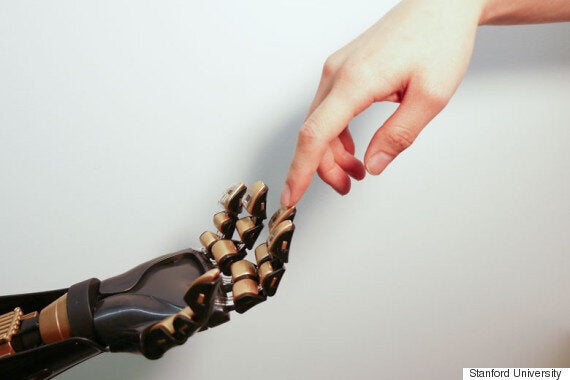Scientists have developed artificial skin that can sense pressure in the same way human skin can.
Made out of plastic, the lab-created skin contains receptors that can generate electrical signals to the brain when it detects pressure.
This is the closest scientists have come so far to creating a material that mimics the sensory capabilities of human skin and it will be a breakthrough for people who wear prosthetic limbs.

The research was led by Zhenan Bao, a professor of chemical engineering at Stanford University.
"This is the first time a flexible, skin-like material has been able to detect pressure and also transmit a signal to a component of the nervous system," she said.
SEE ALSO:
- Paralysed Man Feels For The First Time In Ten Years After Receiving Ground-Breaking DARPA Robotic Hand
- Paralysed Woman Controls Robotic Arm With Mind-Control
- 'Prosthetic Tentacle' Invented As Alternative To Artificial Limbs (PICTURES)
- Robert Downey Jr. Gives Bionic 'Iron Man' Arm To 7-Year-Old Boy
- Lego Prosthetic Leg For Amputee Is The Best Thing You'll See Made Of Toy Bricks (VIDEO)
Bao and her team's creation consists of two parts, including one layer that senses pressure and another that generates signals the brain can read.
The beauty of this artificial skin is its ability to also detect the difference between a light touch and a firm handshake, in the same way our own skin would.
In order to do this, researchers placed carbon nanotubes within the material. When the tubes were squeezed closer together more pulse-like signals were sent to the brain, telling the wearer that greater pressure was being applied.
Scientists hope to develop the skin one step further by enabling it to recognise temperature and texture.
"We have a lot of work to take this from experimental to practical applications," Bao said in a statement.
"But after spending many years in this work, I now see a clear path where we can take our artificial skin."